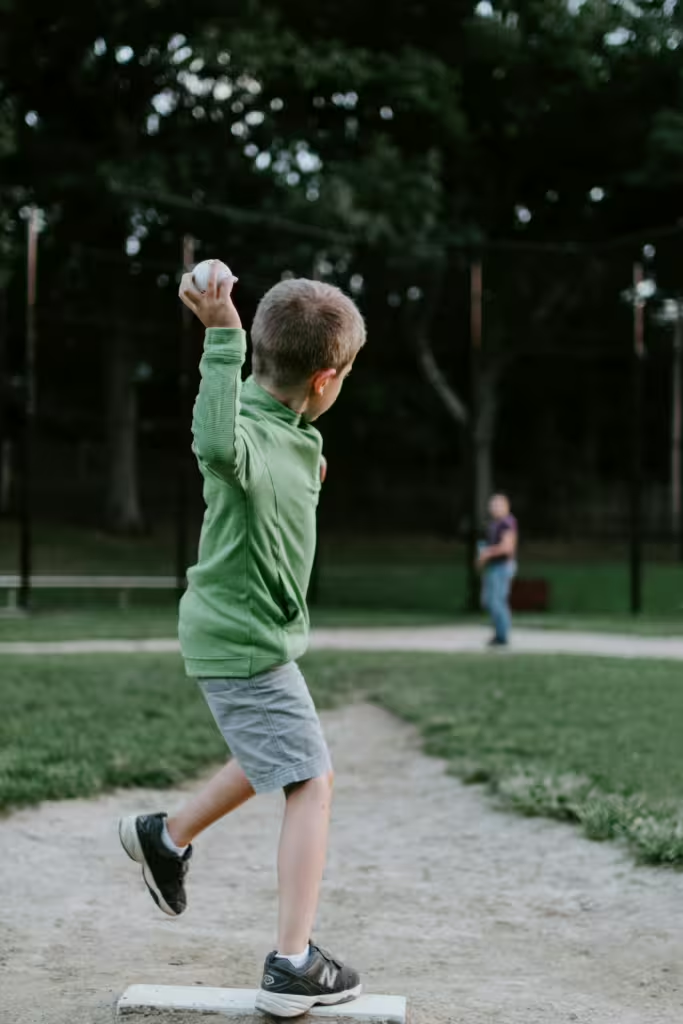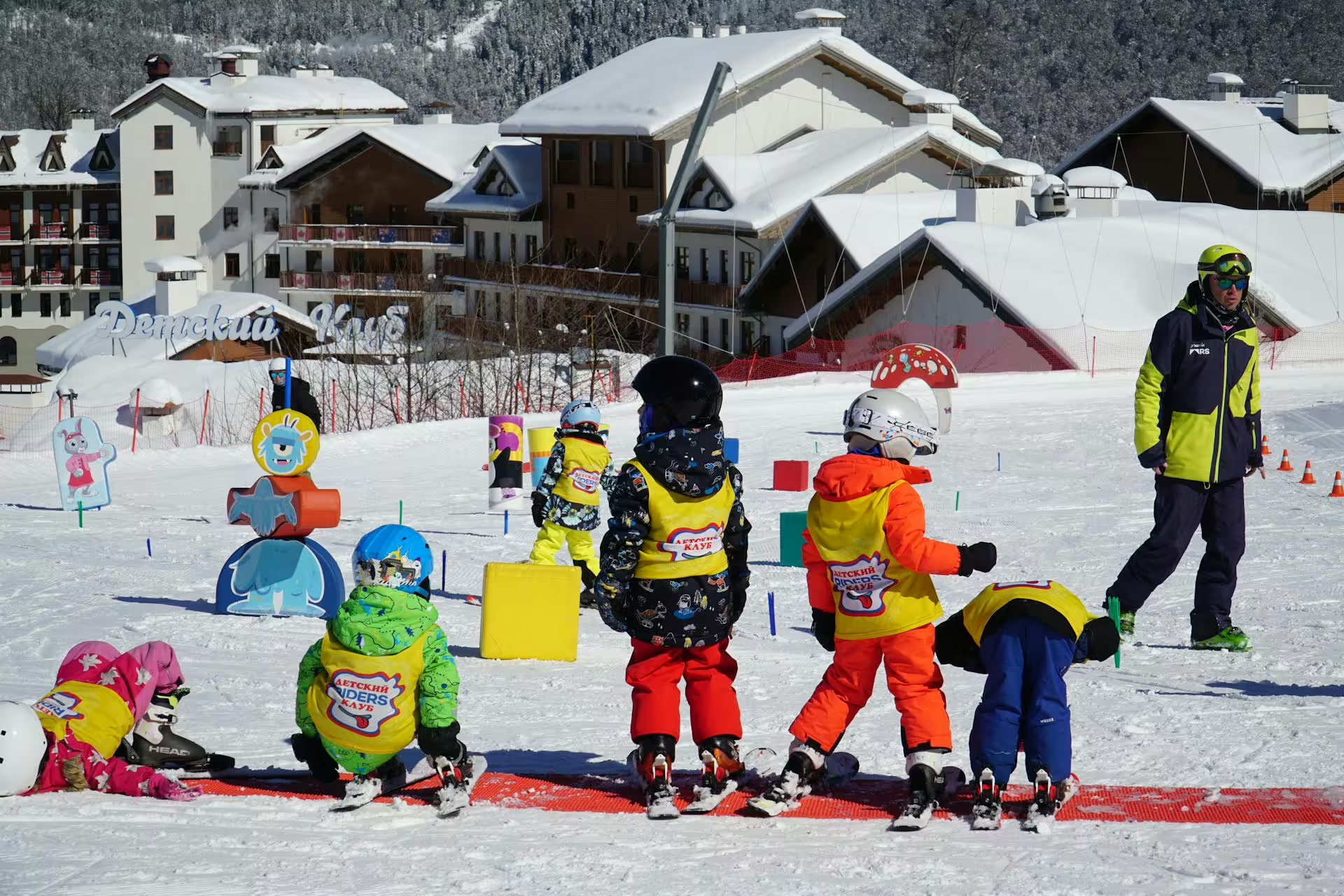Engaging kids in sports is one of the best ways to promote physical fitness. Kids who play sports are healthier and more outgoing in general. By playing and learning, they develop new skills, discover the joys of teamwork, and form healthy habits that can carry them well into adulthood. However, maintaining a kid’s interest in sports can be something of a challenge at times. Kids are fickle, their interest waxing and waning with the phases of the moon. So how do parents and coaches keep that interest going strong?
The answer is simple, really. The key ingredient to getting a child into any activity, be it physical activity or a science experiment, is fun. By incorporating creative games and drills into practice, adults can put the emphasis on enjoyment and learning, rather than simple athletic success. This way, young athletes can develop crucial skills while staying personally motivated to participate.
In this article, we will explore how parents and coaches can make sports more fun. By participating in a host of innovative games and drills, young athletes will learn to enhance their basic skills like running, jumping, and throwing. The activities presented below till help kids to improve their teamwork and coordination in a way that feels both motivational and enjoyable.
Why Fun is Important in Kids’ Sports

Before diving into specific games and drills, it’s important to understand why fun is so crucial. Children are simple creatures. If an activity doesn’t entice or entertain them in some way, then it’s not one that they’ll want to continue doing. It’s simple psychology, when kids enjoy what they’re doing, they’re more likely to stay engaged with that activity. Not only that, they will also tend to try harder and will be able to build a more positive relationship with that activity. In the case of sports, that activity is mostly physical exercise, though much of it will eventually encompass mental exercise as well. Fun sports experiences can also help children develop the following attributes:
- A love for exercise: Kids who see sports as something enjoyable are more likely to continue participating in physical activities throughout their lives. This can combat childhood obesity and screen or social media addiction, which are significant challenges that modern parents must navigate with their children.
- Self-confidence: Fun activities give children the opportunity to succeed in small, manageable ways. These little victories can go a long way in boosting a child’s self-esteem.
- Social skills: Fun games often require collaboration. Kids learn the value of teamwork, cooperation, and communication skills as a result. This also helps them build new, often lasting friendships with their peers.
- Perseverance: Sports are challenging at times, but so long as they are enjoyable, those challenges can be very rewarding. Fun drills can teach kids the value of persistence and hard work.
By ensuring sports practices are fun and engaging, coaches and parents can help young athletes develop lifelong healthy habits while having a great time on the field.
Warm-Up Games
Kids should always warm up before engaging in any amount of physical activity, Frankly, most adults should pay heed to this message as well. Coaches should ensure that every practice session starts with a warm-up and parents should do the same with home workouts. Warm up activities get the body moving and the muscles ready for action. But just because they are necessary doesn’t mean that warm-ups have to be boring! There are plenty of fun ways to get budding athletes excited about warming up for sports.
Shark and Minnows
Objective: This warm-up activity improves speed, agility, and awareness.
How it Works:
- Coaches choose one player to be the “shark” and the rest to be “minnows.”
- The minnows stand on one side of the playing area, and the shark stands in the middle.
- When the shark says “Go,” the minnows try to run across the field or court without being tagged by the shark.
- Any minnows that get tagged by the shark become sharks for the next round.
- The game continues until one minnow remains. Last minnow standing…err swimming, is the winner.
Why It’s Fun: Shark and Minnows turns warming up into an exciting game of chase. Kids can run, dodge, and laugh raucously as they try to avoid being caught. This game is a great way to get children moving while improving their speed and reflexes.
Freeze Dance
Objective: This warm-up exercise develops coordination and balance.
How it Works:
- Parents and coaches start by playing music while encouraging the kids to move around the field or gym, running, jumping, or dancing.
- When the music stops, the children must all freeze in place immediately.
- Anyone who moves after the music stops is out and must sit out until the next round.
Why It’s Fun: Freeze Dance combines movement with music, which makes it a lively and engaging warm-up exercise. Kids feed off the anticipation of when the music will stop, and it helps them practice stopping quickly, which are crucial skills for many organized sports.
Running Drills with a Twist
Nearly every sport that kids play will see them running at one point or another. But just because they need to run doesn’t mean it has to be repetitive or boring. The creative running drills found below add fun elements to this simple exercise that keep kids entertained while improving their speed and endurance.
Relay Races with Obstacles
Objective: These running drills improve a child’s overall running speed, agility, and coordination.
How it Works:
- Coaches should set up a series of obstacles such as cones, hurdles, or hoops along the running path.
- Coaches should then divide the children into teams and have them run a relay race, but with a twist—they must navigate through the obstacles.
- Each player must run, jump, or crawl through the obstacles before passing the baton to the next teammate in line.
Why It’s Fun: Relay races are always exciting and adding obstacles makes them even more engaging for children. Kids love the challenge of maneuvering through cones or hopping over hurdles, and the team aspect encourages cooperation. This activity also encourages kids to cheer their teammates on in order to reach victory.
Animal Relay
Objective: Animal relays help build endurance and muscle strength in young athletes.
How it Works:
- Coaches divide the kids into equal teams.
- Instead of running, each player must move across the field or gym like a different animal. Some examples of this would be having them “bear crawl,” “frog hop,” or “crab walk” to the finish line.
- The first team to have all members complete the relay wins.
Why It’s Fun: Young children, in particular, love pretending to be animals. This twist on a traditional relay race adds humor and excitement to the otherwise humdrum drill. In addition, kids builds strength and coordination as they move in different ways.
Ball Skills Drills

Ball skills, such as throwing, catching, dribbling, and shooting, are critical for many team sports. The fun drills presented below are designed to help children improve their ball-handling abilities. Coaches can utilize these drills to keep ball skill practice lighthearted and enjoyable.
Catch and Toss Challenge
Objective: This ball skill drill improves hand-eye coordination and catching ability.
How it Works:
- Coaches pair up the kids, and give each pair a ball. Younger children could do this drill using beanbags.
- Kids start by standing a few feet apart and tossing the ball to each other.
- Each time a kid successfully catches and tosses the ball, they take a step backward.
- The game continues until one pair drops the ball. The pair that stands the farthest apart without dropping wins.
Why It’s Fun: Kids love pushing their own boundaries and so they enjoy seeing how far they can toss the ball and still make the catch. It might sound like a simple game, but it becomes more challenging as the distance increases, keeping kids engaged and motivated.
Soccer Bowling
Objective: This drill improves kicking accuracy and aim.
How it Works:
- Coaches start by setting up a set of cones or empty water bottles as “pins” at one end of the field.
- Kids then take turns kicking a soccer ball from a designated distance, trying to knock down as many pins as possible.
- The trick is to keep track of how many pins each player knocks down. Player with the most points wins.
Why It’s Fun: Soccer Bowling adds a fun, competitive twist to simple kicking practice. The challenge of knocking down pins makes it more interesting than simply kicking a ball into a net. Also, kids love competing to see who can knock down the most.
Teamwork Games
Teamwork is key to a number of sports, so teaching kids to work together is one of the most important aspects of youth sports that children can learn. The fun teamwork games presented below emphasize the value of communication, cooperation, and teamwork. These activities help young athletes learn the value of working together toward a common goal.
Pass the Ball Relay
Objective: This drill helps kids improve passing skills and enhances teamwork.
How it Works:
- Coaches divide the kids into two teams and line them up.
- Each team has a ball. The ball should match the sport, so it can be a soccer ball, basketball, or any other sports ball that is commonly used for that particular sport.
- The first player in line must pass the ball to the next player without dropping it. The ball continues down the line until it reaches the final player.
- Once the last player receives the ball, they run to the front of the line and start the process all over again.
- The first team to successfully pass the ball through all its players and return the ball to the first player wins the relay.
Why It’s Fun: Pass the Ball emphasizes teamwork and communication while encouraging friendly competition amongst one’s peers. Children enjoy the challenge of passing the ball quickly and accurately, and the race format of the drill keeps them excited and motivated to succeed.
Human Knot
Objective: This drill fosters cooperation, problem-solving, and communication.
How it Works:
- Coaches have the kids stand in a circle and join hands with two people who are not directly next to them, forming a “knot.”
- The group then works together to untangle themselves without letting go of each other’s hands.
- Kids will need to communicate and cooperate to figure out how to get out of the knot.
Why It’s Fun: Kids love the puzzle-like aspect of this drill. The human knot is a fantastic way to build communication and problem-solving skills amongst players. This game is also a great icebreaker and helps build team camaraderie among unfamiliar players.
Shooting Games for Precision
Whether it’s basketball, soccer, or hockey, shooting is one of the most exciting parts of childhood sports. Coaches should endeavor to create fun shooting drills that help players improve their accuracy while encouraging the thrill of scoring.
Horse (Basketball)
Objective: This drill improves a child’s shooting accuracy and creativity.
How it Works:
- One player starts by taking a shot from anywhere on the court.
- If they make the shot, then the next player goes. That player must try to make the same shot. If they miss, they get a letter (starting with “H”).
- The game continues with each player taking turns making shots, and every miss results in another letter. The first player to spell “HORSE” is out.
Why It’s Fun: Horse encourages creativity with shooting. Players are encouraged to take shots from anywhere and in any style, rather than to trey to just make a three-pointer. The game is also pretty light and allows kids to experiment with different types of shots with very low stakes.
Target Shooting (Soccer or Hockey)
Objective: This drill is used to improve shooting accuracy and aim for certain sports.
How it Works:
- Coaches begin by setting up targets inside the goal, such as cones or hanging targets.
- Players then take turns shooting at the targets, earning points based on which target they hit.
- The player with the most points after a set number of shots wins.
Why It’s Fun: The thrill of hitting a target and scoring points keeps children motivated and engaged in the drill. This game succeeds by adding a competitive element, while also helping players develop precise shooting skills.
Cultured Athlete Says…
Making sports fun for kids is essential to keep them engaged and making sure they are motivated enough to continue. Coaches can incorporate the creative games and drills presented above in order to maintain excitement, while helping young athletes develop essential skills, such as teamwork, perseverance, and confidence.. These activities will allow coaches and parents to foster a love for physical activity that can last for a child’s entire life.
Discover more from CulturedAthlete
Subscribe to get the latest posts sent to your email.






